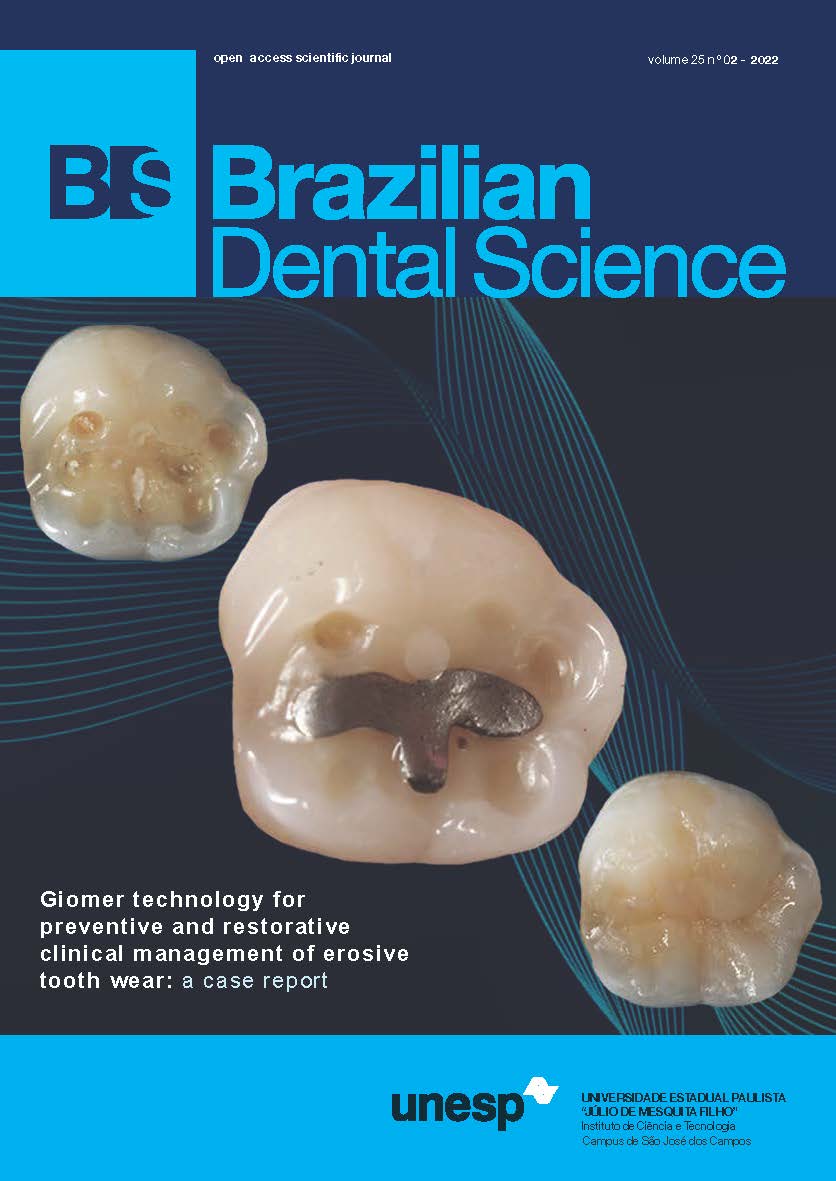Influence of nicotine dependence, current smoking status and gender on CYP1A1, CYP1B1 and CYP2A6 expression in oral squamous cell carcinoma
DOI:
https://doi.org/10.4322/bds.2022.e2956Abstract
Objective: Tobacco smoke is composed of cancer-causing chemicals referred to as carcinogens. These carcinogens
are metabolized by the enzymes of the cytochrome P450 (CYP) family. Our objective was to evaluate the
correlation of tobacco consumption parameters with CYP1A1, CYP1B1 and CYP2A6 expression using qRT-PCR
in samples of oral squamous cell carcinoma (OSCC). Material and Methods: The sample was divided into
2 groups: Cancer (36 subjects) and non-Cancer (12 subjects). The smokers’ participants (36) were evaluated
regarding their Nicotine dependence (ND) was assessed by the Fagerström test for cigarette dependence (FTCD).
Questions regarding tobacco consumption like the number of cigarettes/day (CPD), duration of use, and packyears
were also evaluated. The Mann-Whitney and Spearman correlation tests were used at a significance level
of 5%. Results: 48 participants were included, 32 men (66.7%), 36 smokers (75%) and 27 smokers with OSCC
(56.3%). Samples of OSCC expressed more CYP1A1, CYP1B1, and CYP2A6. Especially, the CYP1B1 gene was
significantly expressed in OSCC samples, regardless gender or tobacco use. No women expressed CYP2A6, as
well as, non-smokers did not express the CYP1A1 and CYP2A6 genes. CYP1A1 gene was higher among men
(P = 0.021). Conclusion: Lack of exposure to tobacco may justify the absence of CYP1A1 and CYP2A6 expression
in non-smokers. The CYP1B1 gene was significantly expressed in the cancer presence despite gender or tobacco
use. The assessment of ND and quantification of tobacco consumption are important instruments in monitoring
smokers with benign oral lesions and, especially, in the presence of cancer.
KEYWORDS
CYP1A1; CYP1B1; CYP2A6; Carcinoma; Squamous cell; Tobacco use disorder.
Downloads
Downloads
Published
How to Cite
Issue
Section
License
Brazilian Dental Science uses the Creative Commons (CC-BY 4.0) license, thus preserving the integrity of articles in an open access environment. The journal allows the author to retain publishing rights without restrictions.
=================




























